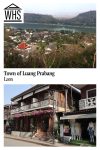Town of Luang Prabang
By Albert Smith
What is Luang Prabang?
Luang Prabang is a historic town in northern Laos. Surrounded by mountains, it is located where the Nam Kahn River connects with the Mekong River. Due to its strategic location on the Silk Road, it acquired wealth and became an important town in the 14th century, when it became the capital of the Kingdom of Lana Xang. It was the capital for about two centuries. When the French made Laos a protectorate in 1894, it once again became the capital under King Sisavang Vong. It remained so until the capital moved to Vientiane in 1946.
Disclosure: This article contains affiliate links. Making a purchase through an affiliate link will mean a small commission for this website. This will not affect your price. Privacy policy.
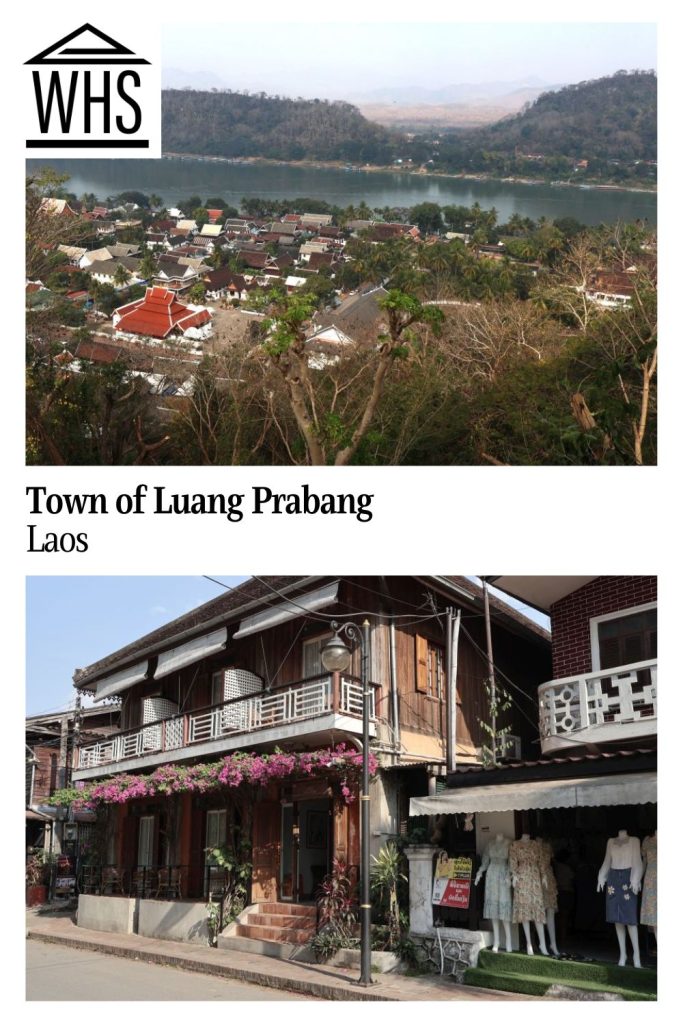
The town now is a popular tourist destination for both backpackers and Chinese tourists. The backpackers cross over from Thailand, arriving on a slow boat on the Mekong, either from Chiang Mai or Chiang Rai. The Chinese tourists can take a fast modern train from Kunming. Visitors take the same train in the opposite direction from Bangkok-Vientiane-Luang Prabang.
Why is the Town of Luang Prabang a UNESCO World Heritage site?
Luang Prabang became a UNESCO site because of its well-preserved extraordinary mix of architectural styles. It reflects a fusion of more traditional Lao-style houses built mostly of wood and one or two-storey brick colonial-style houses.
To quote the UNESCO website: “Luang Prabang is an outstanding example of an architectural ensemble built over the centuries combining sophisticated architecture of religious buildings, vernacular constructions and colonial buildings.”
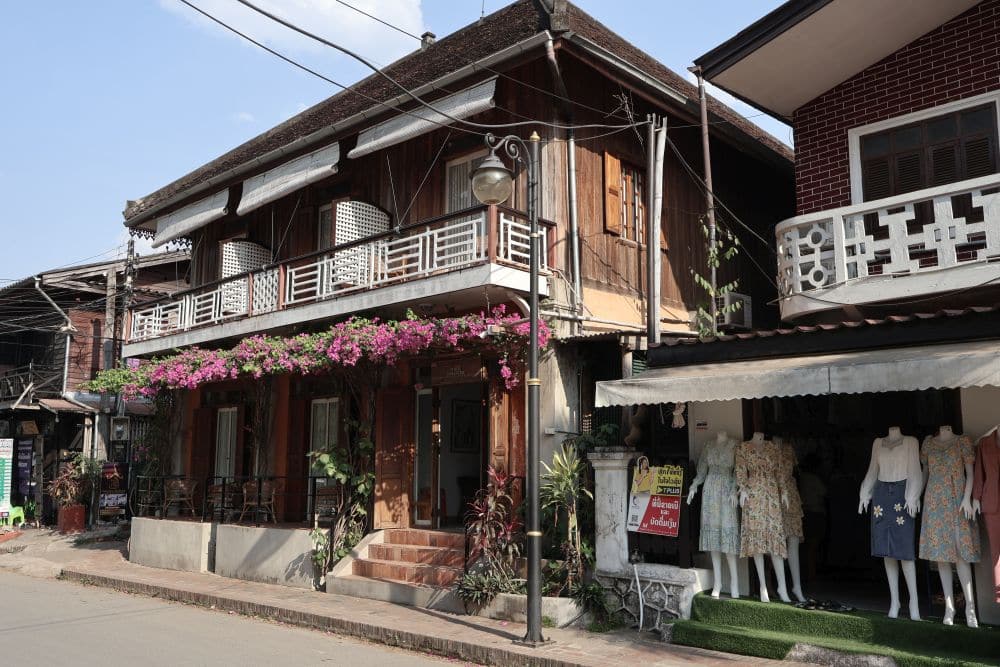
What can you expect on a visit to Luang Prabang?
The most interesting part of the town is situated around Phousi Hill. You pay a small entrance fee to follow the path and its 328 steps up to the top of the hill. Along the way you will find several Buddha statues and small temples. One of the temples is partly carved into the rock. From the stupa on top of the hill, you have a fantastic view over the city and the two rivers that form the peninsula. You can come down on either side of the hill. Either continue your walk along the Nam Khan river (southeast descent) or the main street (Northwest descent).
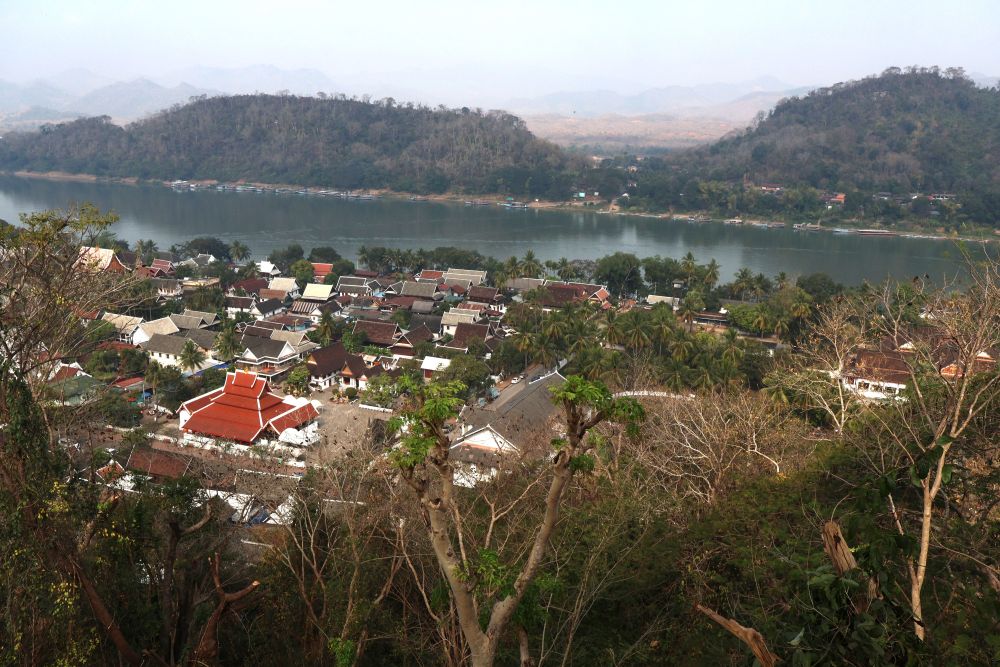
Walking along the main street starting at the tourist information center going northeast, you will find several temples that are beautifully decorated. The first, Wat Mai, was founded in 1796 during the reign of King Anourouth and restored by his son in 1821. Past Phousi Hill on the peninsula, you will see Wat Sen Soukharam (“Temple of a 100,000 Treasures”), another richly-decorated temple. It was built in 1718 by King Kitsarath using 100,000 stones from the Mekong River.
But the most beautiful is undoubtedly the Xieng Thong Temple, which is also the oldest temple in the street at the end of the peninsula. Built in the 16th century by King Setthathirat, it comprises a main chapel and several other buildings with Buddha images. The outsides of the buildings are decorated with intricate wooden carvings as well as figurines composed of little pieces of colored glass.
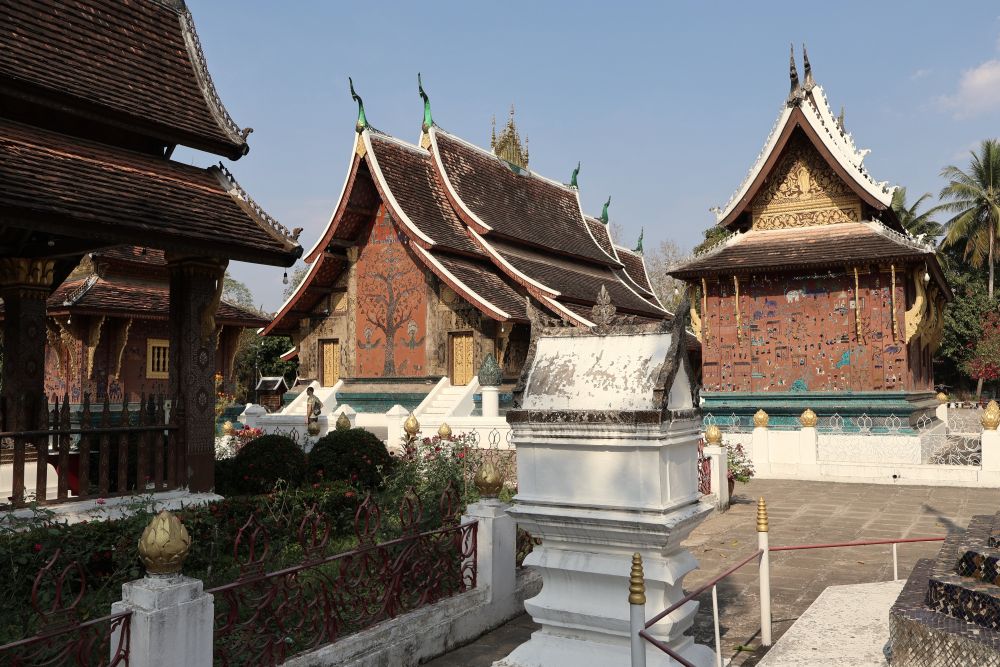
Walking on the main street of the old town you will also find lots of local shops selling crafts as well as cozy bars/restaurants where you can sit and have a cappuccino while observing the traffic going by. Allow time, too, to walk Khem Khong Street along the river. You will then see why Luang Prabang is a UNESCO site: many beautiful residences – both colonial and more traditional Lao houses – stand side by side. Along the riverside, you will find many restaurants with a good view of the Mekong river.
Also worth visiting is the National Museum located next to Wat Mai. It is housed in the former royal palace of Laos, built by the French between 1904 and 1909 as a gift to King Sisavang. The building is an example of the fusion of Lao traditional and French architectural styles with the use of local materials. The museum shows various items that belonged to the King and Queen, amongst others their golden crowns. The most striking feature, though, is the walls of the rooms, which are all red with little figurines made of little pieces of glass.
Aside from the cultural and artistic importance of the Town of Luang Prabang, it has always been and still is an important religious center. Early in the morning, from about 5:30-7:00, monks and novices from the various villages and temples walk the streets to receive alms from locals and tourists. However, when I woke up early one morning to observe this tradition, I got the impression it was mostly a tourist attraction. The only people I saw participating in the almsgiving was a group of tourists.
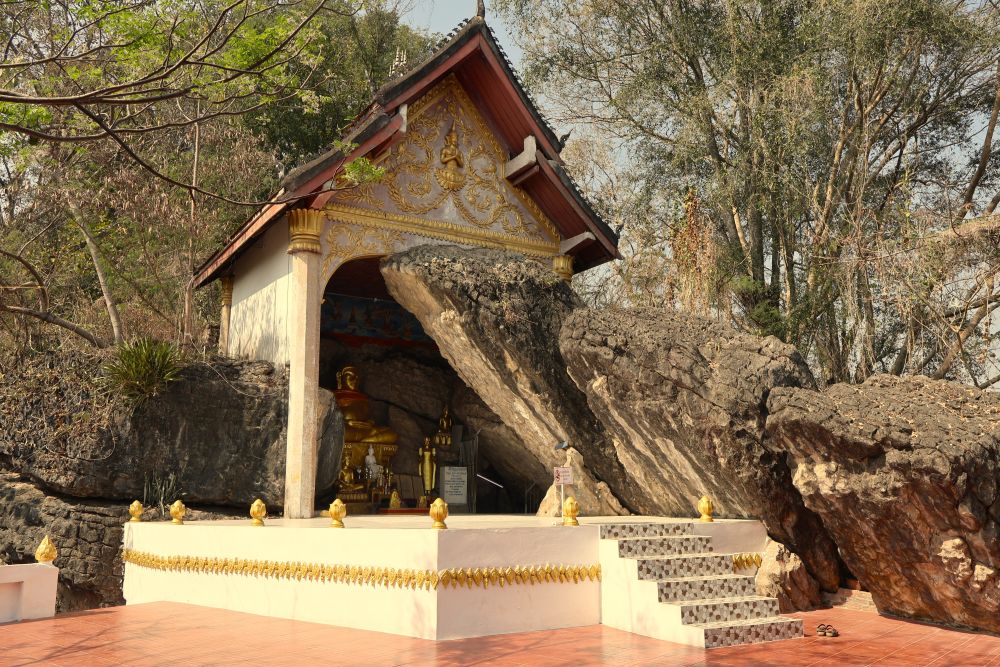
Is the Town of Luang Prabang worth visiting?
Yes, I think it is. Luang Prabang is a lovely town with many interesting sites to visit. Besides that, there are many little bars and restaurants where you can relax and enjoy a drink or meal. The sites located on the peninsula can be visited in one day. However, I think that to see Luang Prabang well you should allow for two days or more, especially if you want to visit some of the parks and waterfalls that surround Luang Prabang.
What sorts of travelers would like Luang Prabang?
As the Town of Luang Prabang became a UNESCO site because of its blend of traditional Lao and colonial architecture, people who are interested in history and architecture would love this town. But Luang Prabang will also appeal to other travelers ranging from young backpackers to retired couples. It’s pleasant just to shop or enjoy a meal along the riverside. But you can also enjoy a jungle adventure in the surroundings of Luang Prabang and then have a meal at the night market in the old town. If your budget allows, there are also many restaurants with more sophisticated menus.
Use the map below to find accommodations in Luang Prabang. Zoom out a bit to see your options on the peninsula:
Tips for visiting Luang Prabang
In the dry season, Luang Prabang can get very warm with temperatures of about 30°C (86°F). So it is best to do your walking in the morning hours, especially going up Phousi Hill. It is also very easy to rent a bicycle (costs about US$2-3/day). It is mostly flat, so it’s easy to cycle and requires a lot less effort if you want to explore the city in one afternoon.
If you want to visit the National Museum, be aware that it closes from 11:30 am-13:30 pm. You have to check your camera into a locker place and you need to wear long pants (which can also be rented at the site).
The morning market in the old town offers fruits, vegetables, meats, fish, etc., but also crafts and clothes. The prices are cheaper than in the shops on the main street.
The tourist information office has a good (free) map of the city. It gives some information about some of the sites. In addition, it indicates where you can go if you wish to observe or participate in the almsgiving ritual during the early morning hours.
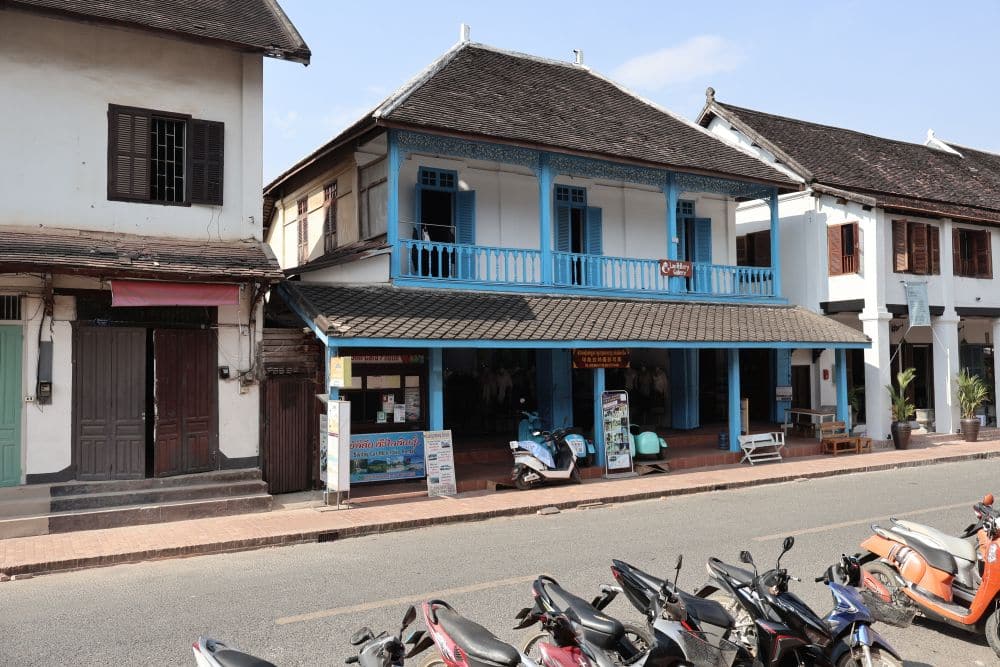
Where is Luang Prabang?
Luang Prabang is a city in the northern central part of Laos. It is about 350 km (217 mi) north of the capital, Vientiane. From the northwest (over the Thai border at Huay Xai) it can be reached by slow boat from Chiang Rai or from Chiang Mai. That will take two days with a stopover at Pak Beng. This route is very popular with backpackers and not so suitable if you like any kind of comfortable journey.
Far more relaxing would be to take a train from Vientiane on the Bangkok-Kunming (China) railway line. This is a very fast train that travels in what seems one straight line at a speed of 160 km/hr (100 mph) with one stop at Vang Vien. It takes less than two hours from Vientiane to Luang Prabang and costs about US$45). The railway station is about a half hour away from the center, so you would have to take a minibus or tuktuk to get to your destination.
Alternatively you could take a bus from Vientiane to Luang Prabang (about US$8) but this takes 9-11 hours. Traveling by car will take about 6-7 hours from Vientiane.
Lastly, Luang Prabang has an airport so flying there would also be possible.
This tour (three days, two nights) from Luang Prabang to Vientiane allows visits to a number of places between the two cities, including the UNESCO site Plain of Jars.
For more information, see Tourism Luang Prabang’s website.
Have you been to Luang Prabang? If so, do you have any additional information or advice about this UNESCO World Heritage site? Please add your comments below!

